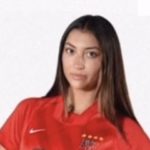Schwartz: Your best 11 starts with periodization
By Jennifer Schwartz
 Editor’s note: Jennifer Schwartz is the owner of Impact Fitness DC, a professional private training company providing fitness services to female athletes, teams, individuals, and small groups in Washington, D.C. She holds a certified mastery in biomechanics with a specialization in resistance training and muscle activation techniques™, and is also a United States Soccer Federation-licensed coach with the Alexandria Soccer Association. Soccer Wire is very pleased to present Jennifer’s perspectives on biomechanics and injury prevention.
Editor’s note: Jennifer Schwartz is the owner of Impact Fitness DC, a professional private training company providing fitness services to female athletes, teams, individuals, and small groups in Washington, D.C. She holds a certified mastery in biomechanics with a specialization in resistance training and muscle activation techniques™, and is also a United States Soccer Federation-licensed coach with the Alexandria Soccer Association. Soccer Wire is very pleased to present Jennifer’s perspectives on biomechanics and injury prevention.
There should be no doubt: A higher level of fitness is required if we desire success in the beautiful game.
At last month’s National Soccer Coach Association of America (NSCAA) Convention, there was one particular theme buzzing through every corner — periodization. Emma Hayes, head coach of English side Chelsea Ladies, presented a model of periodization highlighting the nature of success as a result of detail and planning. Her philosophy was in sync with my own: Successful coaches have to move away from one-size-fits-all training for their athletes.
Hayes presented holistic and objective planning of our soccer training blocks as the most important components of her model —emphasizing a true understanding of training and matches. The subsequent demands and details are organized in a way to support a successful season in which players are healthy and available throughout the season.
The most fantastic thing about well-executed periodization is the success and peace coaches will have knowing they are not overloading their players at any point during training. Overloading leads to fatigue, and an accumulation of fatigue equals injury and/or a noticeable decline in performance.
Plain and simple, the responsibility of overuse injuries rests on the shoulders of the head coach. The following quote from Hayes illustrate her beliefs on periodization: “The coach controls the volume, the player controls how hard they work.”
Hayes’ prime directive? “Training is passion, not punishment.” Her guidelines:
- The overall goal has to be maximizing an individual’s potential. Fatigue and injuries are always on the table for discussion, especially with athletes competing at a high level.
- Conditioning for positional fitness can be molded into a training periodization. It is the player’s responsibility to ensure that they are prepared for training at a high level (strength training, nutrition, and rest).
- The use of yelling, exercise punishment and misguided exercise instruction contributes to an environment of fatigue and ultimately, an unhealthy relationship with exercise.
- All of the details must support a periodization plan and objective training goals. You should know the objectives for blocks of training segments.
- Coaches and trainers must use context and specificity to bring a continual challenge to the athlete’s training mindset.

When an athlete decides to play to compete (ages 14 and up), strength training and optimal recovery must become part of the equation; however, there is no blueprint. This is where experts and education become a part of an athlete’s development.
Ali Swee, a 13-year-old swimmer from Memphis, Tenn., was essentially told to “suck it up” when her coach demanded she perform 1,024 push-ups in routine practice. It was a decision that landed all of them in court.
Ali was breached as an athlete, both physically and mentally.
She contended the excessive pushups represented punishment dished out by her coach and contributed to shoulder pain that continues today (five years later). Her family filed suit, seeking money for past and future medical expenses related to her shoulder issues.
The coach had a different story, but in the end, a jury stated the excessive set of push-ups were legal.
This case study provides several points of discussion for both coaches and parents. How did one set of push-ups cause this much pain and anxiety? The answer isn’t simple, but the result of a multitude of factors. Five years of chronic shoulder pain comes from the continuous accumulation of smaller pains, that weren’t just flukes. The gun was loaded through a season of accumulated fatigue and the volume of push-ups in the set was the trigger.
The human body is pure genius. Your “Executive in Charge,” the nervous system, doesn’t assess the risk or benefit of each movement — it just does it — in a millisecond it detects the challenges presented by movement and orchestrates a solution with the available muscles. The prime directive of the nervous system is to keep you moving. That is what Ali’s did, but the toll would be chronic pain, in the end.
The intervention is prevention. It originates from a season plan. Knowing your players, and the demands of the playing style are key objectives… As coaches, we needed to be educated in the details; keeping our bodies healthy enough to understand the demands placed on them.
We know these types of injuries are avoidable, but when do we intervene?
The intervention is prevention. It originates from a season plan. Knowing your players, and the demands of the playing style are key objectives. This is the culture change Ms. Hayes tried to spark during her NSCAA lecture. As coaches, we needed to be educated in the details; keeping our bodies healthy enough to understand the demands placed on them. This model of respect for yourself, for your team, and for being a student of the game are parts of what contribute to planning periodization.
SoccerWire.com has featured some quality coaching and parent education trends. My coaching philosophy (strength and soccer) is centered on creating an environment intended for growth.
A quote by John O’Sullivan should remind us of GRIT, and a grassroots effort to develop talent and the interesting topic of an athlete’s willingness to suffer:
“A combination of an athlete’s willingness to suffer his or her comfort with being uncomfortable is often a strong determinant of whether they reach their potential, or instead become another one of those ‘shoulda, coulda, woulda’ players.”
Do we define suffering with a test of physical exertion? Can’t we do better than that?
Yes, on both accounts. As a periodization coach you have to see everything as a process: developing players to have the passion to work hard, and the maturity to know the importance of preparation, and that success is part of the long-term periodization goal.
The push-up case is an example of historical continuity. Our coaches punished us with exercise, so we know no other way. There is another way: development and player-centered thinking. That thinking isn’t just about winning. It is about getting the best out of our players.
Dr. Wendy Lebolt’s accounting equation is an excellent guide and resource for parents.
Be ready for your upcoming season. Check out my tips on avoiding the dreaded “Over Training Syndrome” and the chronic fatigue that follows.
SOCCERWIRE MARKETPLACE
- The St. James FC Virginia 2024-2025 Travel Tryouts
- TSJFCV - Hiring Travel Soccer Coaches
- Hiring: U13-U19 Boys Director
- Coaches Needed
- Train with professional AC Milan coach
- Loudoun Soccer 2024/25 Travel Player Placement Sessions
- Official Elite Summer Soccer Camps with Elite Pro Clubs in Europe
- Official EPL Tickets: ARSENAL, LIVERPOOL, TOTTENHAM & MORE
- Travel to Denmark for Dana Cup Hjørring 2024
- New England Surf Challenge and Showcase 2024











